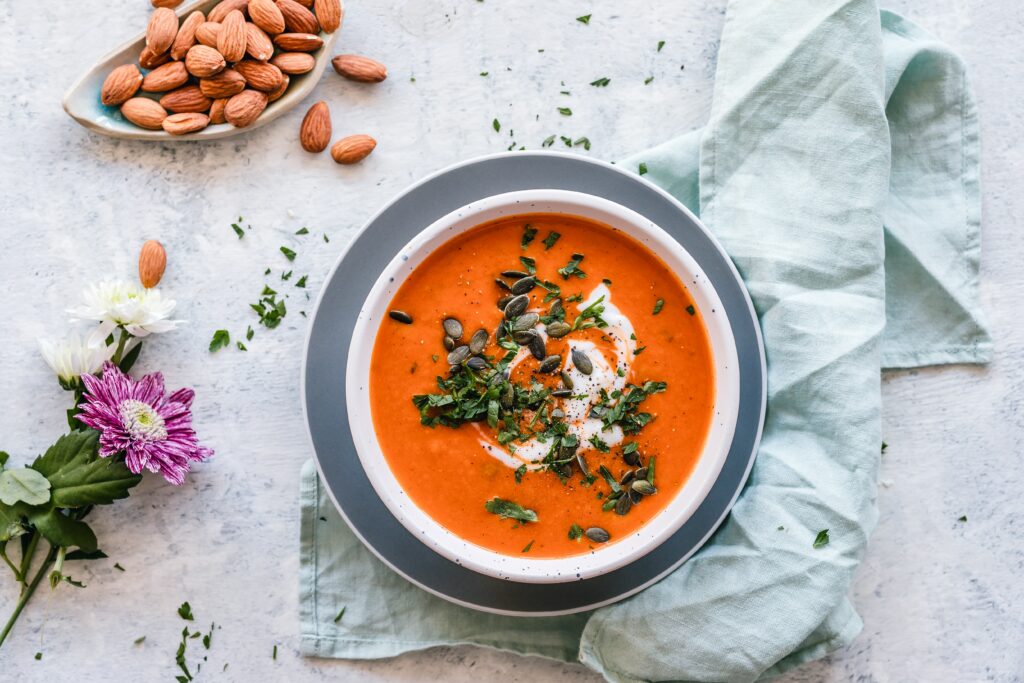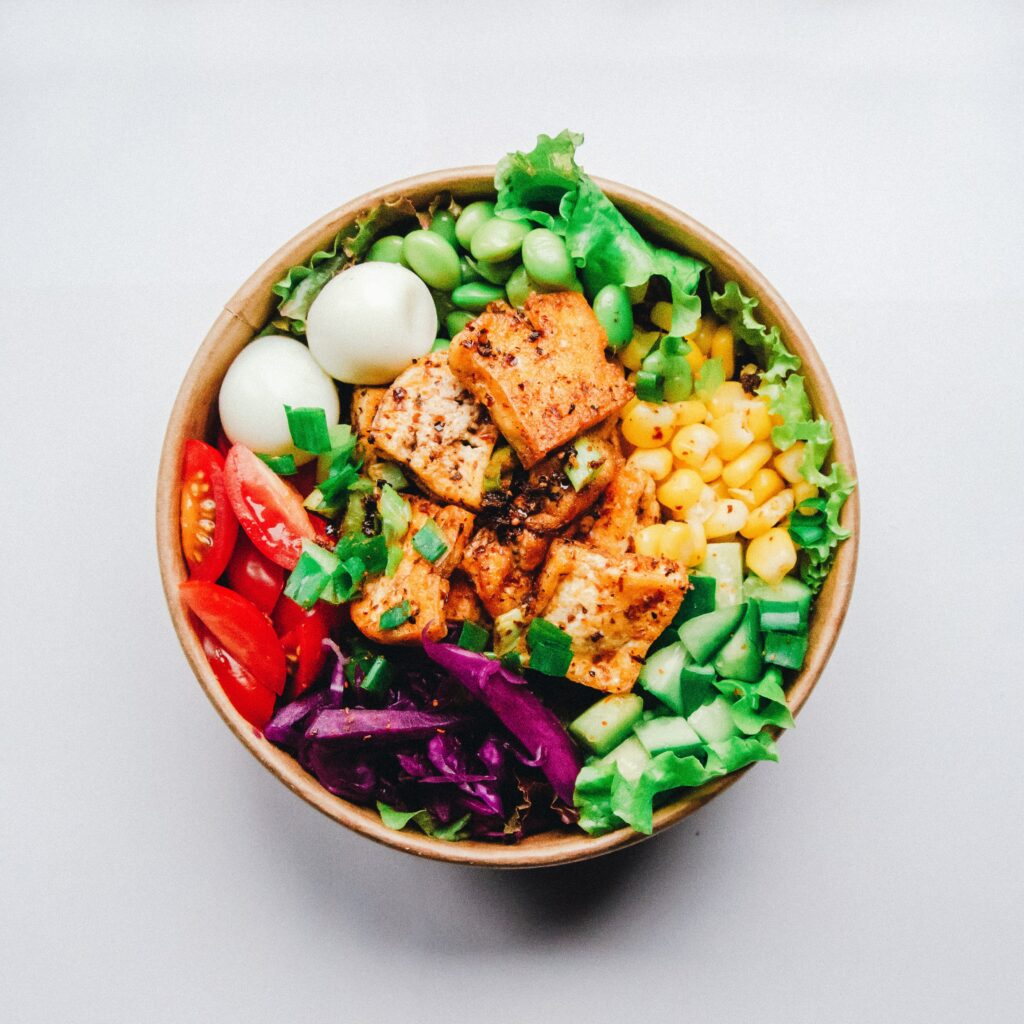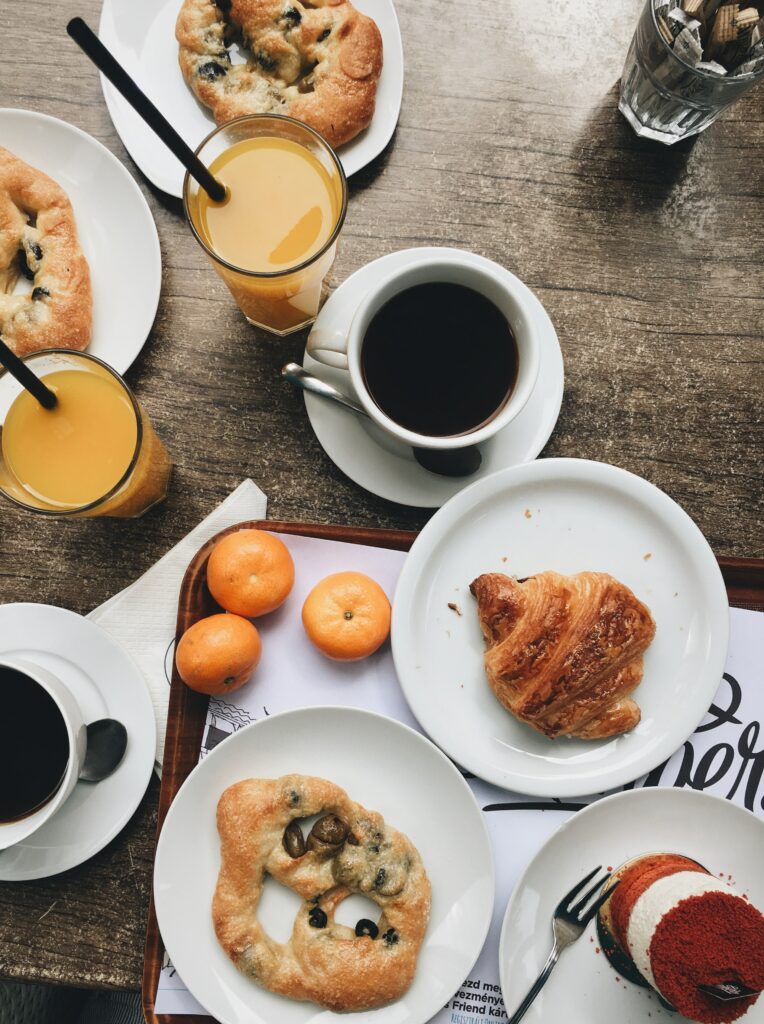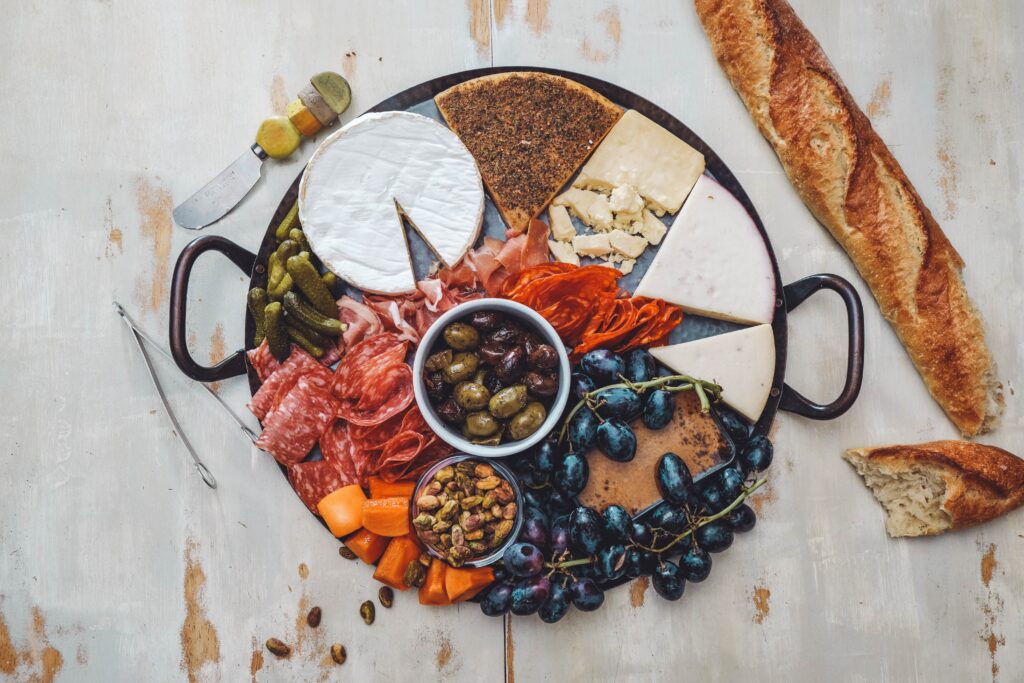There’s no denying it: blood sugar balance is critical for many aspects of your health—hormone balance, fertility, quality sleep, body composition goals, and (so much) more. Whether or not you’re diabetic, understanding blood sugar is key for both short-term and long-term health. On a daily basis, excessive, repeated blood sugar spikes and crashes aren’t fun. They make us feel tired, irritable, and hungry. Eventually, unstable blood sugar can overwhelm your body’s normal, healthy responses (hello, inflammation, weight gain, and a slew of chronic diseases). Today, we’re unpacking all-things blood glucose, as well as foods that don’t spike blood sugar.

WHAT IS BLOOD SUGAR?
Let’s start here. Without knowing exactly what it means, you’ve probably heard of the term. Balancing blood sugar is key—it plays a role in energy, feelings, cognitive function, and more. In fact, you may already be familiar with spikes and dips in blood sugar. Hello, hanger!
BLOOD SUGAR = THE AMOUNT OF SUGAR (OR GLUCOSE) IN YOUR BLOOD AT ANY GIVEN TIME.
Sugar, or glucose, is the body’s main source of energy. The term “blood sugar” refers to the amount of energy (sugar) present in our bloodstream at one set time. Sugar is produced when we break down any form of carbohydrate. Be it an orange, slice of cake, or piece of toast, that carb is absorbed into the bloodstream. Immediately or eventually, carbohydrates are used as a source of energy.
stable blood sugar is the goal
Around the clock, our blood sugar levels fluctuate. And these fluctuations are normal. In fact, we expect a steady rise in glucose after waking, while we exercise, and after eating. However, we want to minimize really high spikes and equally low dips. Over time, they can lead to unwanted health conditions. However, a healthy blood sugar response is one where we have glucose balance after eating. On the other hand, an unhealthy blood sugar response is characterized by a rapid spike in blood sugar followed by a dip below baseline levels—known as a blood sugar crash.

WHAT ARE NORMAL BLOOD SUGAR LEVELS?
A normal blood sugar range will vary. For someone who hasn’t consumed anything other than water (also known as the “fasted state”), normal blood sugar is below 100 mg/dL. Anything at—or above—100 mg/dL is considered borderline high, and a fasting blood sugar of 126 mg/dL (or higher) is often indicative of diabetes. Throughout the day, ideal blood sugar should be between 70-110 mg/dL, and should fall below 140 mg/dL two hours after eating a meal. You can learn about your specific blood sugar response, here.
Want to find out your average glucose? Your healthcare provider can test your A1C (blood draw).
HOW CAN I TELL IF MY BLOOD SUGAR IS High?
A big tell-tale sign: a blood sugar crash, 1-2 hours after eating (typically, a meal high in carbohydrates without adequate protein and healthy fats). This happens when your blood glucose rises too high too fast, and your insulin overcompensates. You may feel sweaty, shaky, light-headed, or experience brain fog. Another sign is strong carbohydrate cravings, especially in the afternoon or evening. It’s a sign you haven’t properly fueled your body with protein, fiber, and fats throughout the day—especially for breakfast.

For stable blood sugar, Do you need to eat low carb?
This is one of the hottest debates in the nutrition world. Some experts believe that a low-carbohydrate diet is key to balancing blood sugar and reversing insulin resistance. Ultimately, this is completely bio-individual. We all metabolize carbohydrates differently. For most, low-carb isn’t the answer. Rather, it’s about quality over quantity. When possible, choose high-quality, minimally processed carbs (whole fruits and veggies, sprouted grains, etc.). Chronically eating too few carbs puts stress on the body, and this stress can lower hormone production—which is not helpful for the female menstrual cycle! You can find your carb sweet spot by wearing a continuous glucose monitor.

HOW TO ACHIEVE blood sugar BALANCE
Below are three steps to help you achieve stable blood sugar, improve your insulin sensitivity, and minimize hormonal imbalances, like PCOS.
1. FOCUS ON A BALANCED, High fiber DIET
What—and how much—you eat is an extremely important factor in maintaining healthy blood sugar levels. For ultimate satiation and stable blood sugar, include all three macronutrients in your meals and snacks: complex carbohydrates, protein, and healthy fats. Prioritize protein, slow-digesting carbs—like beans, legumes, sweet potatoes, and squash—and load up on omega-3 fats (salmon, mackerel, herring, sardines, walnuts, flaxseed, and chia seeds). At every meal, pack in as many non-starchy carbs as possible (leafy greens, broccoli, eggplant, summer squash, mushrooms, bell peppers, etc.). Here’s a meal plan to get started!
2. MANAGE STRESS
Stress elevates cortisol—one of our body’s main stress hormones. This can increase blood sugar and insulin levels. Cortisol also increases secretion of leptin, a hormone that plays a role in appetite control. Leptin secretion can reduce satiety and make you feel more hungry. Find ways to lower your daily stress via meditation and setting proper boundaries.
3. MOVE YOUR BODY
All exercise is beneficial for overall health and managing blood sugar levels. However, a moderately vigorous effort—such as brisk walking, running, cycling, or strength training—for at least 30-40 minutes (3-5 times a week) can significantly benefit insulin regulation and blood sugar levels. Don’t underestimate the power of a moderate, post-meal walk!

Can the order you eat your food change your glucose response?
Research says, yes. New data shows that the order in which parts of the meal are eaten can change how the body releases glucose into the bloodstream. Eating protein and vegetables before carbohydrates leads to lower post-meal glucose and insulin levels in obese patients with type 2 diabetes. In essence, science shows that if you eat the constituents of a meal in a specific order, you can reduce the glucose spike of the meal by 75%. As a woman who wears a continuous glucose monitor, I can attest to this (on a personal level), too.
The ideal order is as follows:
- Vegetables first
- Protein and fats second
- Starches and sugars last

100 Foods that don’t spike blood sugar
Without further ado, below is a long list of foods that don’t spike blood sugar! I wear a continuous glucose monitor to track my blood sugar, and all of these foods keep my blood sugar very balanced (minimal increase in glucose—which is ideal!). That said, there’s no one-size-fits-all for a metabolically healthy diet. You may have little-to-no spike from a banana, for example, and have a big spike when you eat rice—while someone else may have the opposite response.
Protein
When possible, choose organic, pasture-raised, or wild-caught animal protein. For sausage, choose no-sugar added.
- Chicken
- Steak
- Beef
- Turkey
- Ham
- Fish
- Shrimp
- Lobster
- Sausage
- Eggs
- Collagen peptides
- Bone broth
- Greek yogurt
- Cottage cheese
- Kefir
- Hemp seeds
Veggies
In essence, all non-starchy vegetables won’t spike blood sugar: leafy greens, Brussels sprouts, cauliflower, broccoli, asparagus, Bok choy, cabbage, celery, carrots, chard, cucumber, eggplant, endive, hearts of palm, jicama, kohlrabi, leeks, mushrooms, garlic, okra, onion, peppers, radishes, pumpkin, summer squash, snap peas, sprouts, tomatillos, tomatoes, turnips, zucchini, and herbs.
Fruit
- Blackberries
- Blueberries
- Raspberries
- Strawberries
- Coconut
- Lemon
- Lime
- Orange
- Kiwi
Beans and legumes
- Chickpeas
- Lentils
- Black beans
- Kidney beans
- Cannellini beans
- Soybeans
- Pinto beans
Healthy fats
- Avocado
- Coconut
- Coconut yogurt (unsweetened)
- Almonds
- Peanuts
- Walnuts
- Pecans
- Macadamia nuts
- Full-fat dairy
- Ghee
- Butter
- Olives
- Olive oil
- Chia seeds
- Flax seeds
- Pumpkin seeds
- Pistachios
- Pine nuts
- Sesame seeds
Crackers
Tortillas
protein bars
Bread
Like all other ingredients, everyone metabolizes bread differently. However, bread containing sugar or white flour will likely raise your blood sugar. Since bread is primarily made of carbohydrates, it can quickly raise blood sugar. Bread made from seeds or nuts makes a big difference.
- Sprouted, 100% whole grains (no sugar added)
- Sourdough bread
- Gluten-free bread made with almond and coconut flour
Baked Goods
Love to bake? Simply swap in these alternative flours and sweeteners, in leu of refined flours and traditional sugars.
This article is for informational purposes only. It is not, nor is it intended to be, a substitute for professional medical advice, diagnosis, or treatment and we recommend that you always consult with your healthcare provider.



Leave a Reply